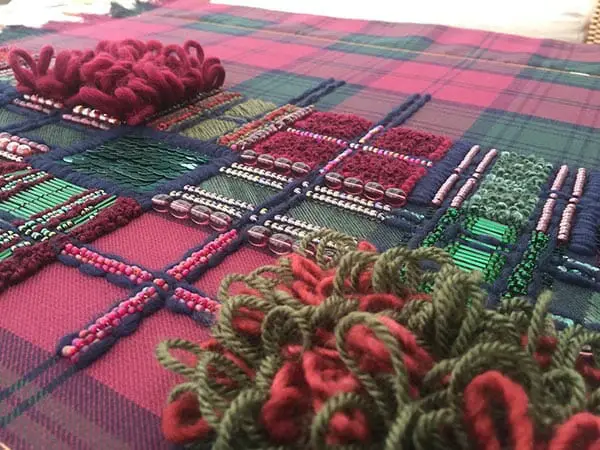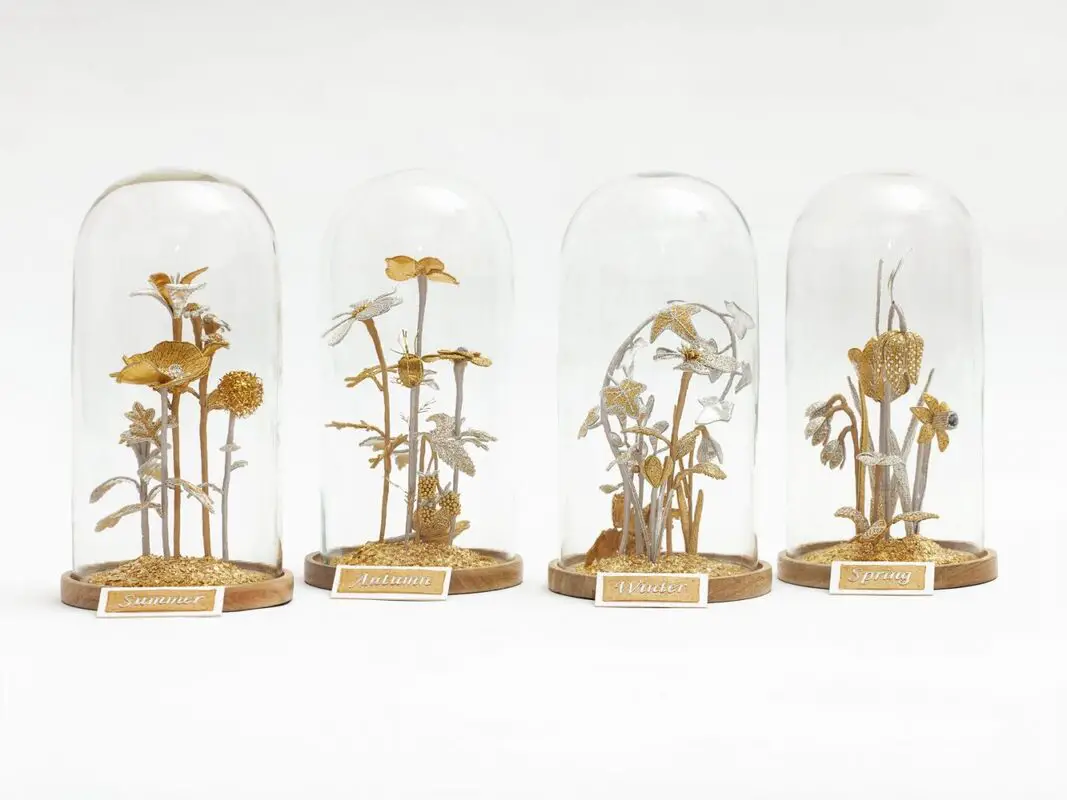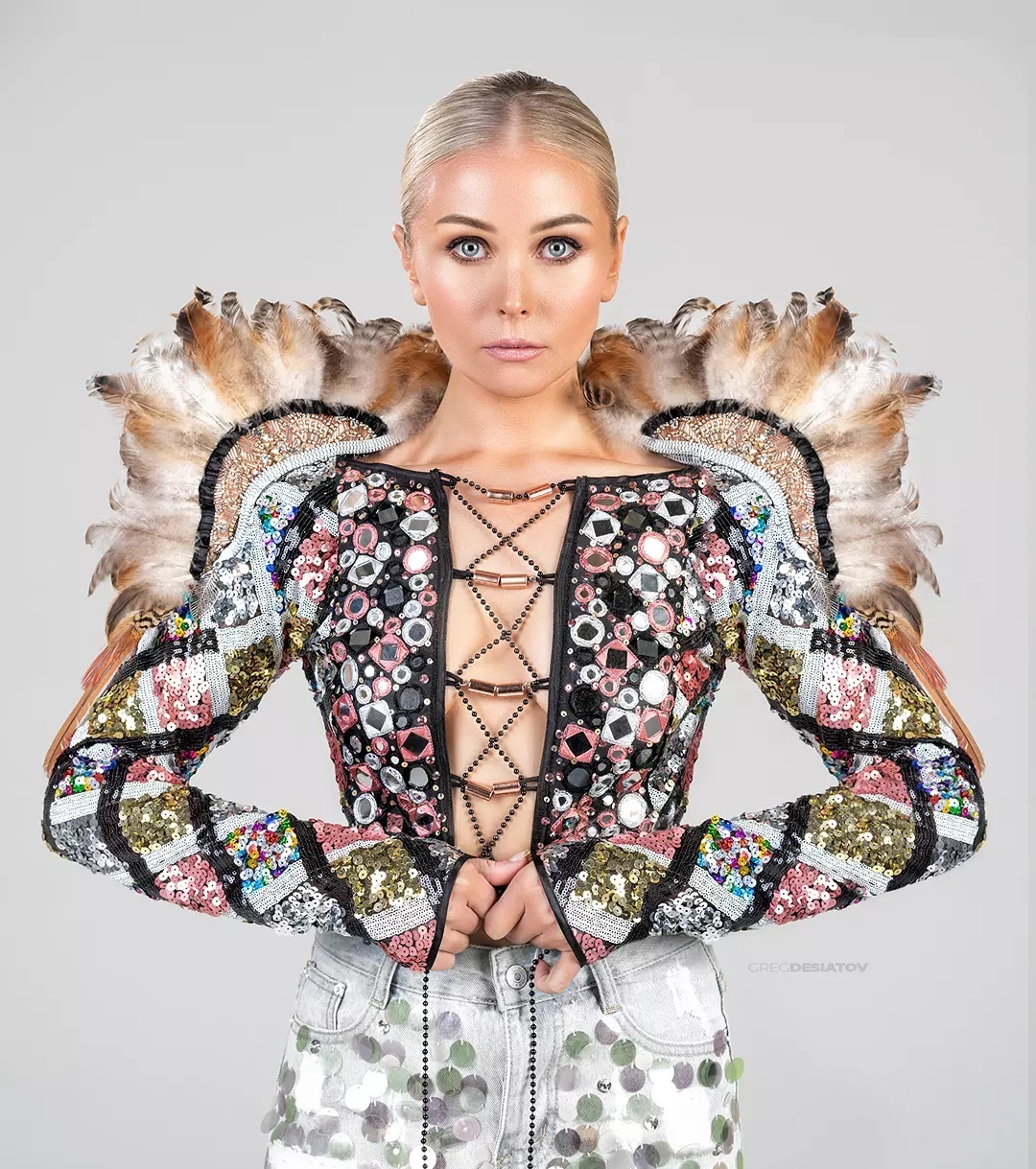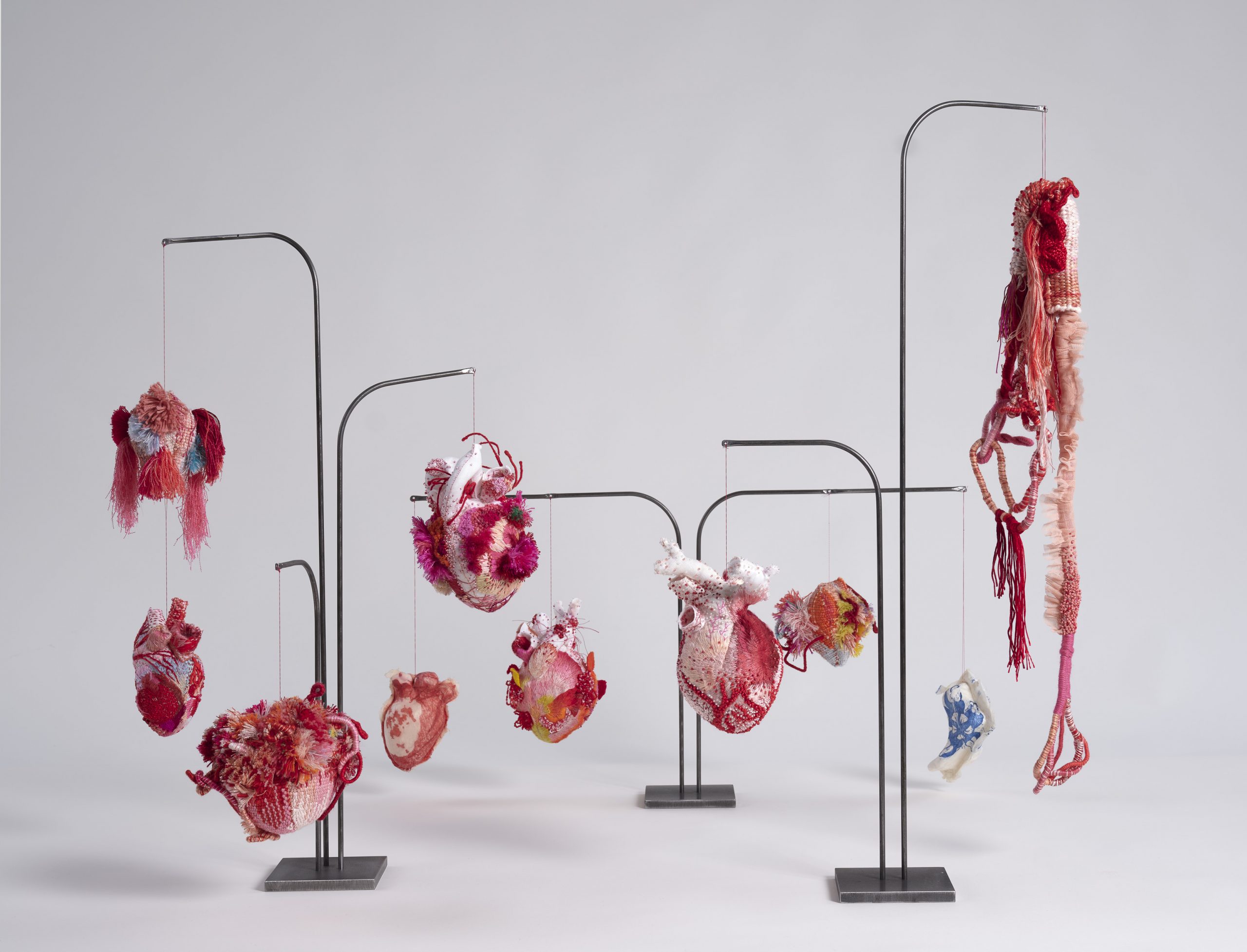
Welcome to the new Goldworx column! I’m Hattie, a hand embroiderer specialising in goldwork and silk shading. I spend my time embroidering from my studio in the Buckinghamshire countryside with my puppy Rigby who steals my fabric & scissors daily. I like wine, gin and a good gif. So that’s a little about me – hop on over to my instagram if you want to meet the scissor stealing pup.
Goldwork, to the non-embroiderer its a strange and unique technique. It’s steeped in history, prominent in the military and loved by fashion houses. But what is it?
Before I started writing this post, I wondered what people thought about goldwork. So I asked on Instagram what my followers knew or thought about it. One of the most popular responses was that people wanted to try it but were daunted by it because it looked difficult and technical. The other common reply I got was ‘goldwork is beautiful – but I don’t know what it really is’. Well you have come to the right place. Welcome to Goldworx, where I will aim to share the history, examples and techniques behind the shiny, intriguing work that pops up in a surprisingly wide range of places.
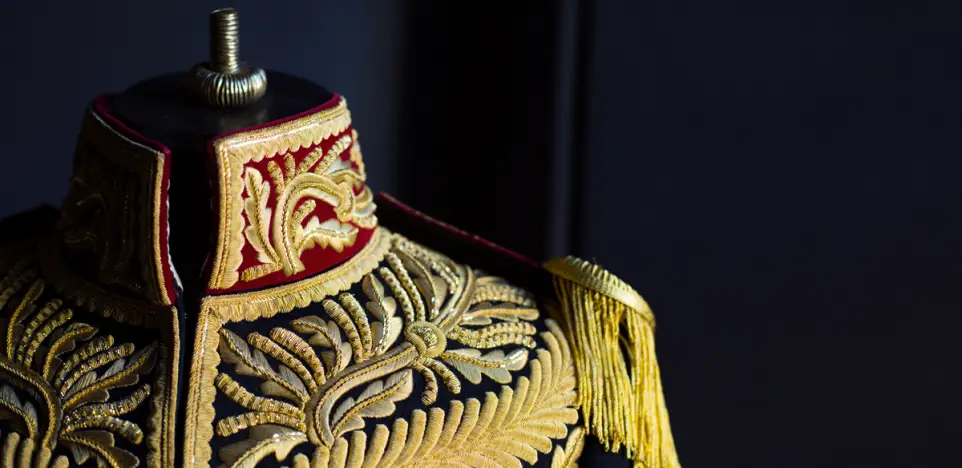
Let’s start at the beginning, goldwork is the art of embroidering with metal threads and is often utilised because of the way the light reflects and plays off the metallic elements. It’s quite unlike any other surface embroidery technique – the threads used are either a metallic filament wrapped around a silk or synthentic core, where other threads consist of a tight coil that makes a metal ‘thread’. Its a luxurious technique, and historically used to be only accessible to the rich, royal and noble. The term ‘gold’ is misleading, as the element is not solely used. Today goldwork as a term includes all colours of metal threads, so really it is very a deceptive term. Just check out the work of Georgina Bellamy to see how colourful goldwork can be.
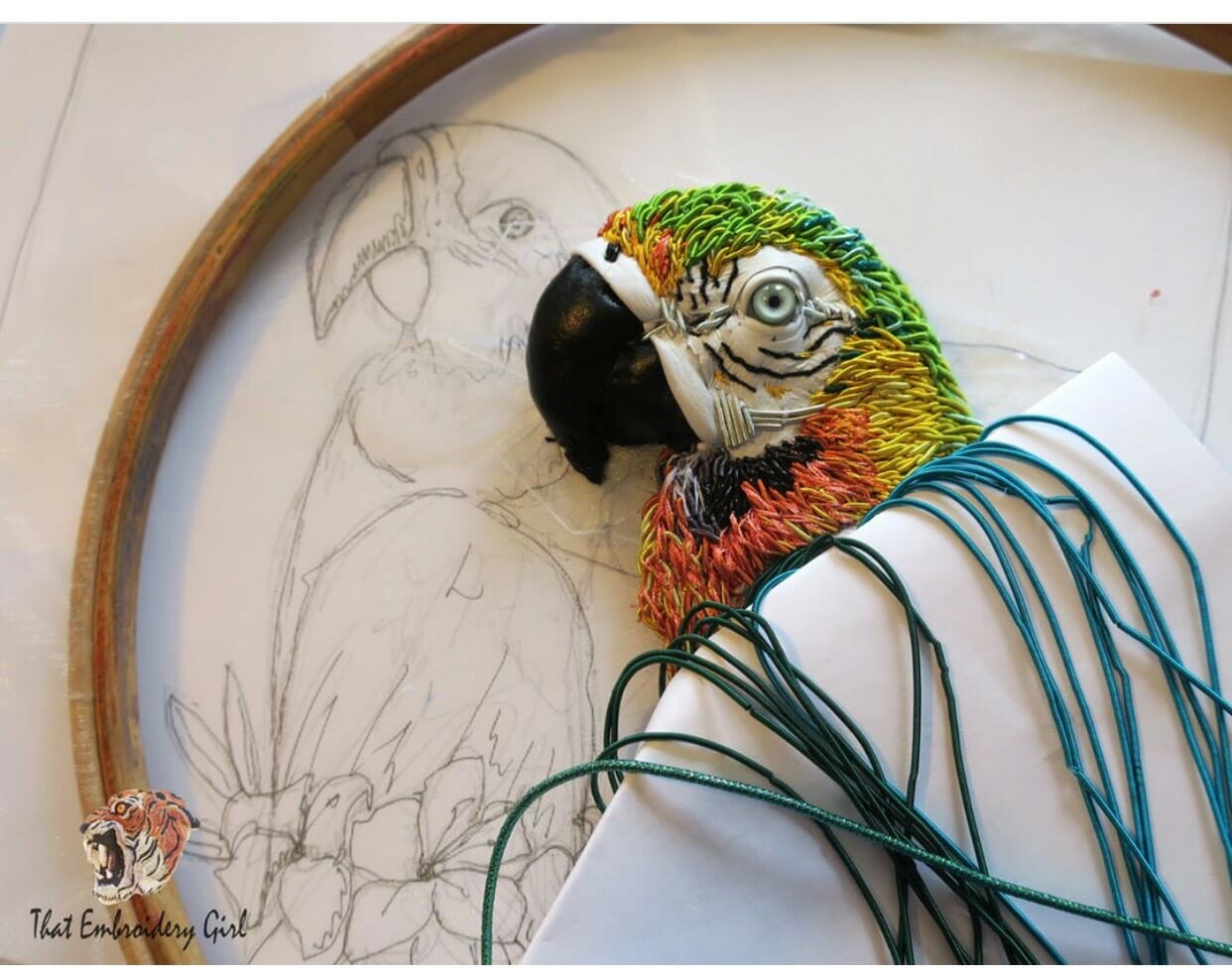
Now for a little history lesson – it is believed that goldwork originated in Asia, the actual date and place has been lost in time. It can be found on historical pieces from Ancient Eygpt, India, Italy to Japan and China and many more, but it also has a long and ancient history in England. In the Middle Ages, goldwork had reached a new level of skill, the work produced in this time was known as Opus Anglicanum (English Work). This term describes the highly-prized and luxurious embroideries made in England of silk, gold, and silver thread, brimming with elaborate imagery.
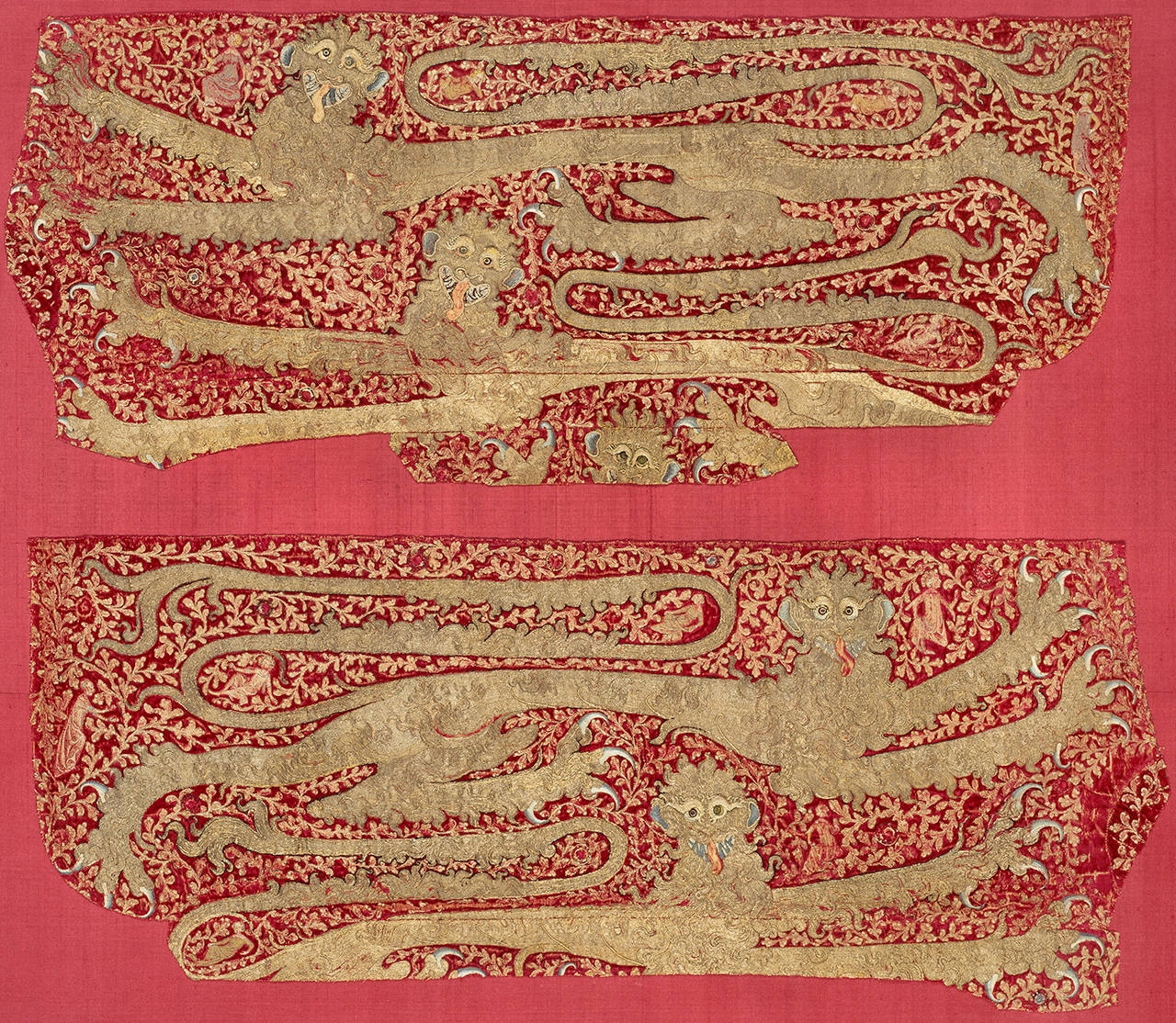
This exquisite embroidery, predominantly for ecclesiastical use on clothing, wall hangings or various other textiles. This type of goldwork was in huge demand across Europe and was seen as the height of luxury. The V&A had an exhibition on it last year and they hold the largest collection of these works in the world – you can see the exhibition highlights here.
goldwork remained a popular form of embroidery through to the fifteenth century and the Tudors, which bought about another luxurious and exquisite time of goldwork embroidery. Portraits of Henry VII, like the one above, show him adorned and loaded in embroidery and jewels, he was clearly not shy of a bit of bling. However with Henry VIII comes the reformation and his split with the Catholic church which had a severe impact on english goldwork embroidery, and many precious, stunning ecclesiastical pieces were destroyed. Nice one Henry.
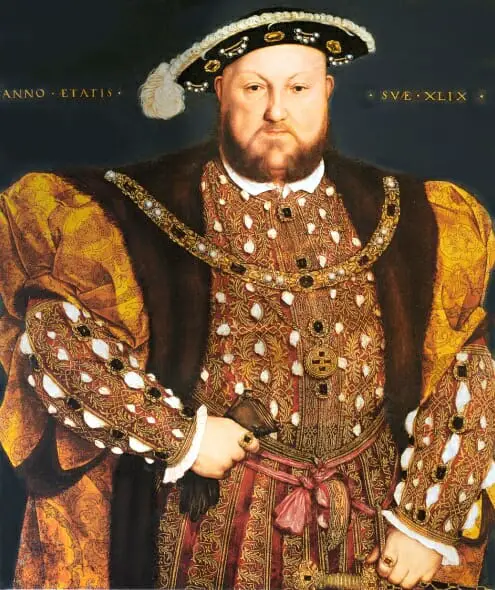
On that dramatic ending I think that’s enough history for one post! Next time we will continue with Elizabethan embroidery, how goldwork has become a staple in military regalia and dress and we will also see what goldwork is up to today. Until next month!


